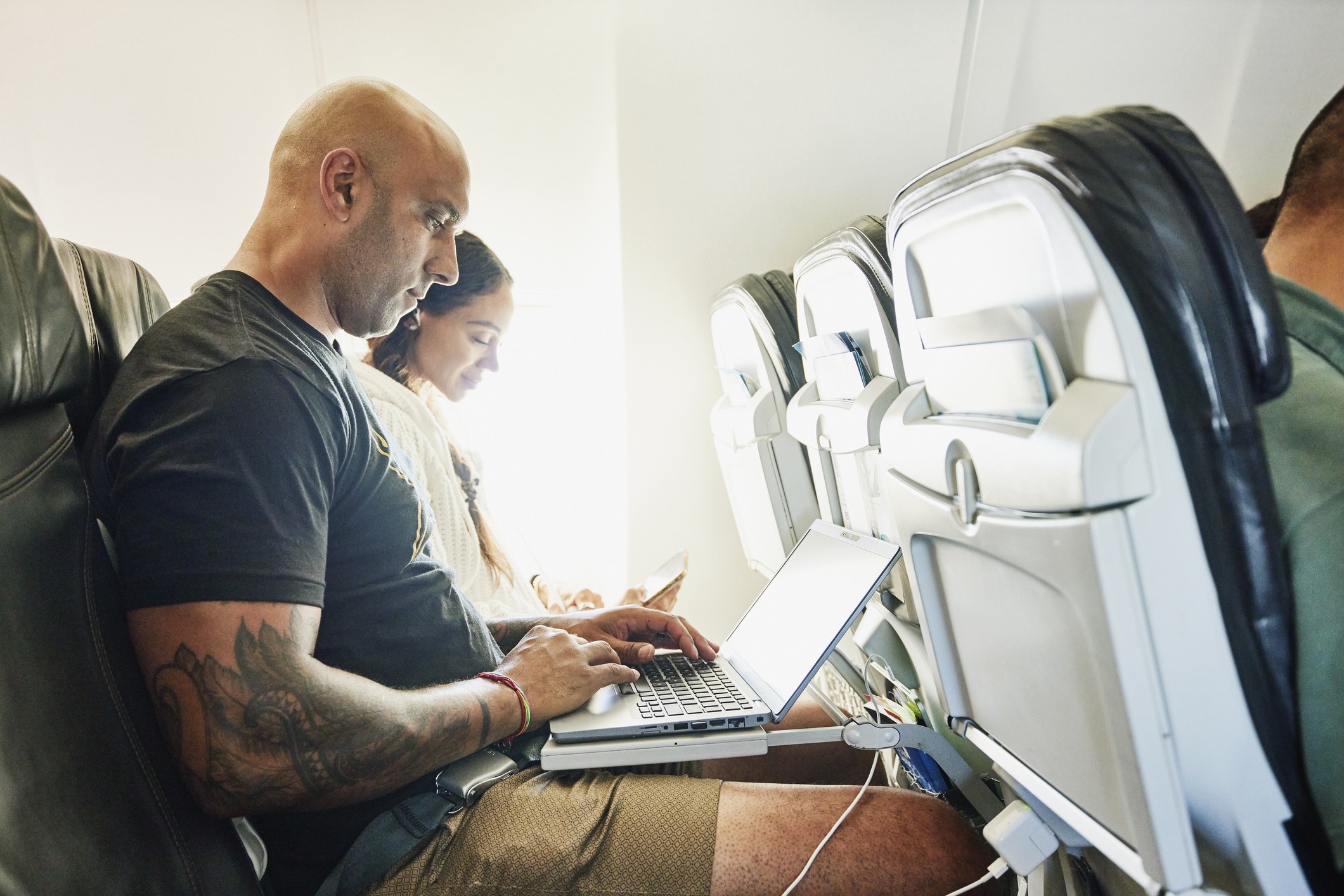
With the end of the year upon us, so is the holiday travel rush. AAA estimates 115 million Americans will head 50 miles or more from home over the festive period, making it the second busiest end-of-year travel season since the company started tracking in 2000, topped only by 2019.
If you’re joining many people heading to the airport for holidays or homecomings, here are some frequently asked questions and tips for long flights. While some answers depend on personal preferences, they also include advice from travel and health experts.
How do I prepare my body for flying?
Jeff Kahn, CEO of the sleep tracker app Rise Science, told Condé Nast Traveler that the best way to ensure you travel and sleep well is to start a trip with “low sleep debt.” A few days ahead of a long-haul trip, you could also begin gradually adjusting your sleep times so that you’re more in-sync with the time zone of your destination.
Before boarding, Going (formerly Scott’s Cheap Flights) suggested exercising to get worn out and ready for sleep, especially if the flight is later in the day. Elsewhere, flight attendants have said they book red-eye flights, as those tend to be quieter and emptier, and the timing can help you get over jet lag.
Staying away from screens, avoiding alcohol and caffeine, and if possible, choosing a seat location that’s best for you to sleep, are among other top tips.
Should I eat before or on the flight?
Travel journalist Andrea Bennett, writing for flight search site KAYAK, has recommended drinking lots of water, and not alcohol or caffeine, before a long flight, so that you can be as relaxed and hydrated as possible—guidance echoed by other travel pros.
Flight attendant Major has also advised that eating before a long-haul flight can maximize your sleeping time, without getting interrupted by on-board food service. However, you may not have time to do so or don’t want to spend money on airport food beforehand. He suggested bringing your own snacks, especially if you’re traveling with kids or have dietary needs, since you won’t be served food for at least an hour after the flight takes off.
If you are eating on the flight, you could consider adjusting your meal times to coordinate with your destination to help get over jet lag, which a 2017 scientific study said can work.
What should I wear?
Flight search website Skyscanner has recommended wearing several loose and comfy layers to adjust your temperature while you fly, since it can be chilly on airplanes. Closed-toed shoes are better than flip flops in an emergency, per the travel site, but travelers are encouraged not to wear shoes that are too snug, since feet can swell at high altitudes.
If you plan on removing your shoes, make sure your socks are clean, so as not to bother other passengers with any smells, flight attendant Kris Major told CNN Travel.
Packing sandals or slippers for going to the restroom is also highly recommended, although not everyone will have room for that in their hand luggage.
How can I make my economy seat more comfortable?
Some travel pros suggested bringing a neck pillow, portable footrest or foot hammock, and/or blanket. However, if you don’t have room to carry extra items, you could use repurposed clothing, such as a scarf, that collapses easily and can serve as a pillow.
Multiple experts, such as certified sleep science coach Alex Savy, recommended using noise-canceling headphones or earplugs and an eye mask to help you sleep.
If you’re worried about turbulence, Major has advised sitting near the front of the aircraft because passengers will feel less bumps there than in the back. If your priority is sleep, then consider paying more for a window seat so you can lean up against the window.
Bennett said if you’re tall, you may want to sit in the exit row, but pointed out this is also where passengers with babies put bassinets, so if you’re concerned about crying, that may not be the place for you. The further up you sit, the quieter the engine noise will be, but the back could be less busy, although it’s best to not sit right by the toilets since that could be disruptive.
Should I exercise, and do compression socks really work?
Sitting for long periods of time without movement can raise the risk of forming a deep vein thrombosis or a blood clot that can be dangerous, UCLA doctors advised. Blood clots can best be prevented by taking frequent walks throughout the cabin, doing in-seat exercises such as ankle circles, foot flexes, knee lifts and shoulder and neck rolls, and wearing compression socks.
“Even people with no physical risk factors can benefit from wearing compression socks on lengthy flights,” the doctors said.
Healthline also recommended not crossing your legs on a plane, wearing loose clothing and staying hydrated to keep up blood flow and prevent clots.
Major said that even just wiggling your toes while sitting in your seat can help, although it's best that people with blood circulation issues speak to a doctor before long flights.
More Must-Reads from TIME
- Why Biden Dropped Out
- Ukraine’s Plan to Survive Trump
- The Rise of a New Kind of Parenting Guru
- The Chaos and Commotion of the RNC in Photos
- Why We All Have a Stake in Twisters’ Success
- 8 Eating Habits That Actually Improve Your Sleep
- Welcome to the Noah Lyles Olympics
- Get Our Paris Olympics Newsletter in Your Inbox
Contact us at letters@time.com